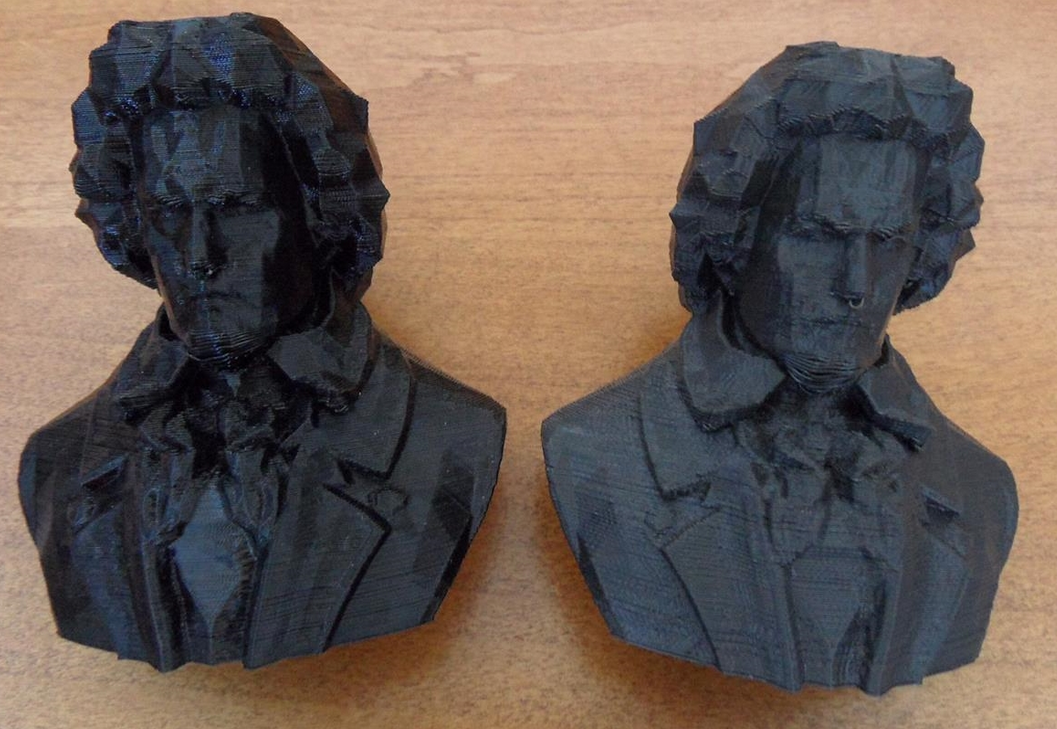Filaments
Helpful article about Filaments
ABS
ABS is short for Acrylonitrile Butadiene Styrene. It’s is widely available and has been a very popular plastic in the development of prosumer 3D printing from the start.
It melts consistently at around 225 degrees Celsius.
It is relatively strong, a little flexible and has a relatively high “glass transition temperature” of around 100 degrees. That’s the temperature above which a plastic goes from it’s solid state to a pliable state where it can loose it’s shape.
These characteristics mean ABS is very suitable to 3D Print functional parts, like spare parts for machines or objects that are exposed to high temperatures like sunlight or hot water.
ABS is dissolvable in acetone and this characteristic is sometimes used to smooth the surface of a 3D Print. Sanding an ABS print and then wiping it with acetone will dissolve the outer layer, essentially smoothing it by reducing the visibility of layers in the print. To fully take advantage of this you smooth prints with acetone vapor—a technique deserves the “don’t try this at home” warning, but gives otherwise matte ABS prints a very glossy finish.

The downsides of ABS are the smell it produces while being heated—which is neither nice nor healthy to live or work around – and the fact that it expands and shrinks in the process of being heated and cooled down again. The shrinkage in particular is a problem for 3D printing, because it causes 3D prints to curl up while cooling too quickly, which is called warping. To counter this, ABS has to be printed on a heated build plate—and preferably in an enclosed, heated build chamber—so it stays warm during printing and can cool down slowly when printing is done.
Warping is a common problem with ABS

PLA
PLA stands for Polylactic Acid, and is a completely different kind of thermoplastic. It’s being made from corn starch or sugar cane and is biodegradable, so it’s more environmentally-friendly than ABS.
It melts can melt at a lower temperature between 190 and 210 degrees and doesn’t smell bad when it does. In fact many people like the smell of PLA - it smells like candy or waffles.
Because PLA flows a little better than ABS, you can print more detailed objects with it at higher speeds. It’s especially good at producing sharp corners. It also is a lot less prune to warping, so you won’t necessarily need a heated print bed to print PLA. However, if you want to print objects with a large flat bottom surface without the edges warping a bit, a little bit of heat (around 60 degrees) from the bed can counter this.
PLA prints have a relatively glossy surface compared to ABS, but the amount of gloss depends on the vendor, color and print temperature.
PLA (left) has a more glossy finish than ABS (right)
